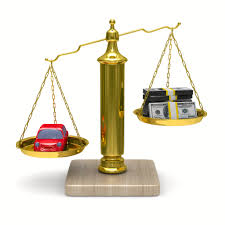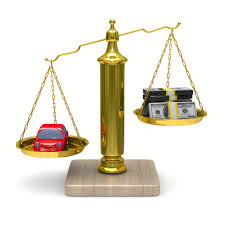Recently I had a client ask me about Kelly Blue Book and if it should be considered the best way to determine the price on a used car. In other words, can I expect to pay what the “book” says? And if I am selling my car, is it best to look up the value on my car, and price it according to the price guide without doing any further research? Is Kelly Blue Book accurate?
The short answer is no. Let me explain what goes into these price guidelines.
Dealers use Kelly Blue Book to establish the value of trade-ins as well as comparing numbers to set their lot prices. Private sellers use it as the bible in selling their personal cars.
It is by far the most popular and, dare I say, “trusted” guide.
The misconception about KBB is that they are “setting” prices. This is not true. They are actually in the business of “tracking” prices. It really comes down supply and demand and KBB is simply following the trail. Sometimes it takes a while for the information to get to KBB and reported in their pricing charts. In order to post prices they use an algorithm that takes prices posted on Autotrader which is the most widely used car selling site on the internet (and owned by KBB). They also derive sale prices from major weekly auto auctions. By having such a broad band of information to pull from, KBB has indeed positioned itself as the most accurate and authoritative evaluation price guide whose numbers compare favorably with the real world.
However there are problems with any price guides. For instance prices started to cave-in on big gas guzzling SUV’s about year 2008 due to low demand. KBB eventually got that into their price guides, but it took a while and the guide was misleading while that data made its way through the pipeline. Conversely the price will also be skewed with high demand vehicles. For instance, if I pull up a Private Party 1998 Toyota Camry with 100,000 miles in excellent condition, KBB has the Camry priced at $3,123 (at the time of this writing). You would be hard pressed to find one being sold by a private party for that little unless someone was foolish enough to follow the guide. Real world price on a car such as that is easily $4000-$5,000, much more than than what the good book says. The reason? Demand, and plenty of it.
As a side note Edmunds.com has that same car in “outstanding condition” at a ridiculous $2,835. If I sold a Camry for a client according to those prices I would need to get a new cell phone plan due to a explosion of incoming calls, and I would be guilty of not doing my homework. If I bought a Camry for a client according to those prices I would be getting the bargain of the year (and an outstanding car).
At the moment, and for the past couple years, there has been much more demand for used cars. As a result of the economic down turn people are looking for good quality used cars as opposed to new. Add to that the ever increasing quality of cars (mainly from Japan and Korea) which has made the used car option more reasonable than ever. The result has been an amped up demand and Kelley Blue Book is trying to track that uptick. Sometimes they lag behind, especially on older models. Keep in mind that the older the model, the broader the differences between Excellent and Fair. The older a car model, the fewer there will be in “Excellent” condition (supply). This in turn drives up the price (demand). That’s tricky to keep track of.
So what is the best way to go about evaluating the price on a car? What is the best guide to help you determine fair pricing? There are three main guides that one can refer to: KBB, Edmunds.com and NADA.com. All of them use different algorithms but the best way is to check all three and then check online for similar vehicles for sale. Dealers will often have the best knowledge about the law of supply and demand (their profit margins depend on that). That will give you a good solid overview. If there is a discrepancy, then figure out why that is. It takes a bit of digging but you will find the sweet spot for your purchase or sale price. If you are selling your car and the phone does not ring then you have it priced too high. If it rings off the hook you have it priced too low.
If you are buying a car and you are wondering what you should pay, you can use KBB as a guide. But keep in mind this: People who are selling their cars view the condition of their own cars rather optimistically. Like a bad marriage there is so much emotional attachment they overlook the obvious. It is very rare to see a car that ranks higher than what people think their car condition ranks. Most people rank their cars as “excellent” no matter what the condition. Indeed beauty is in the eyes of the beholder. Therefore it is you, the informed buyer, that needs to educate the seller by having the very definitions of Excellent/ very good/ good/ fair on hand printed out from the KBB site. Quote it verbatim and see if you can knock some sense into them. Of course if the seller has numerous calls on the car and people are lining up behind you to buy it, well your pleas will fall on deaf ears.
So, in summary, KBB and Edmunds are just guides. They are not the be all and end all. Whatever the market will bear is what the prices will be. In the end it is all about the quality of the car rather than the quality of the price. Pay the premium and look for excellence, even if you are paying above Blue Book. You can get a good deal on a bad car all day long. The trick is to get a fair deal on a great car. After all, the bitterness of poor quality remains long after the sweetness of low price is forgotten.
Greg Macke- Your Car Angel
![]() Greg Macke is a car blogger and author of “My 7 Secrets to Buying a High Quality Used Car”. He is a professional car buyer and consumer advocate working closely in the industry to improve the buyer’s experience. His high quality car buying tutorials offer help to the car buying public. – See more at: https://carbuyingsupport.com/
Greg Macke is a car blogger and author of “My 7 Secrets to Buying a High Quality Used Car”. He is a professional car buyer and consumer advocate working closely in the industry to improve the buyer’s experience. His high quality car buying tutorials offer help to the car buying public. – See more at: https://carbuyingsupport.com/
Source link


